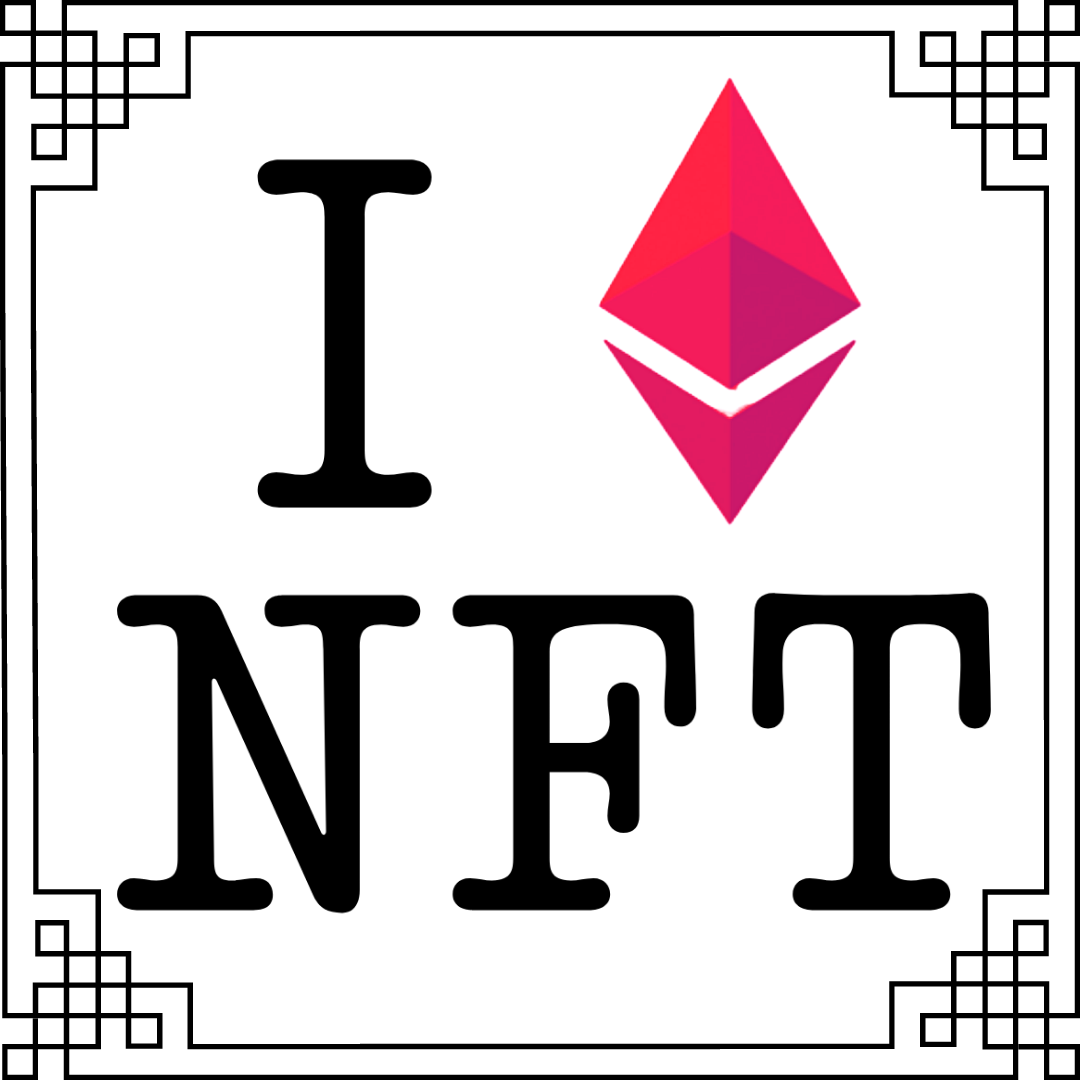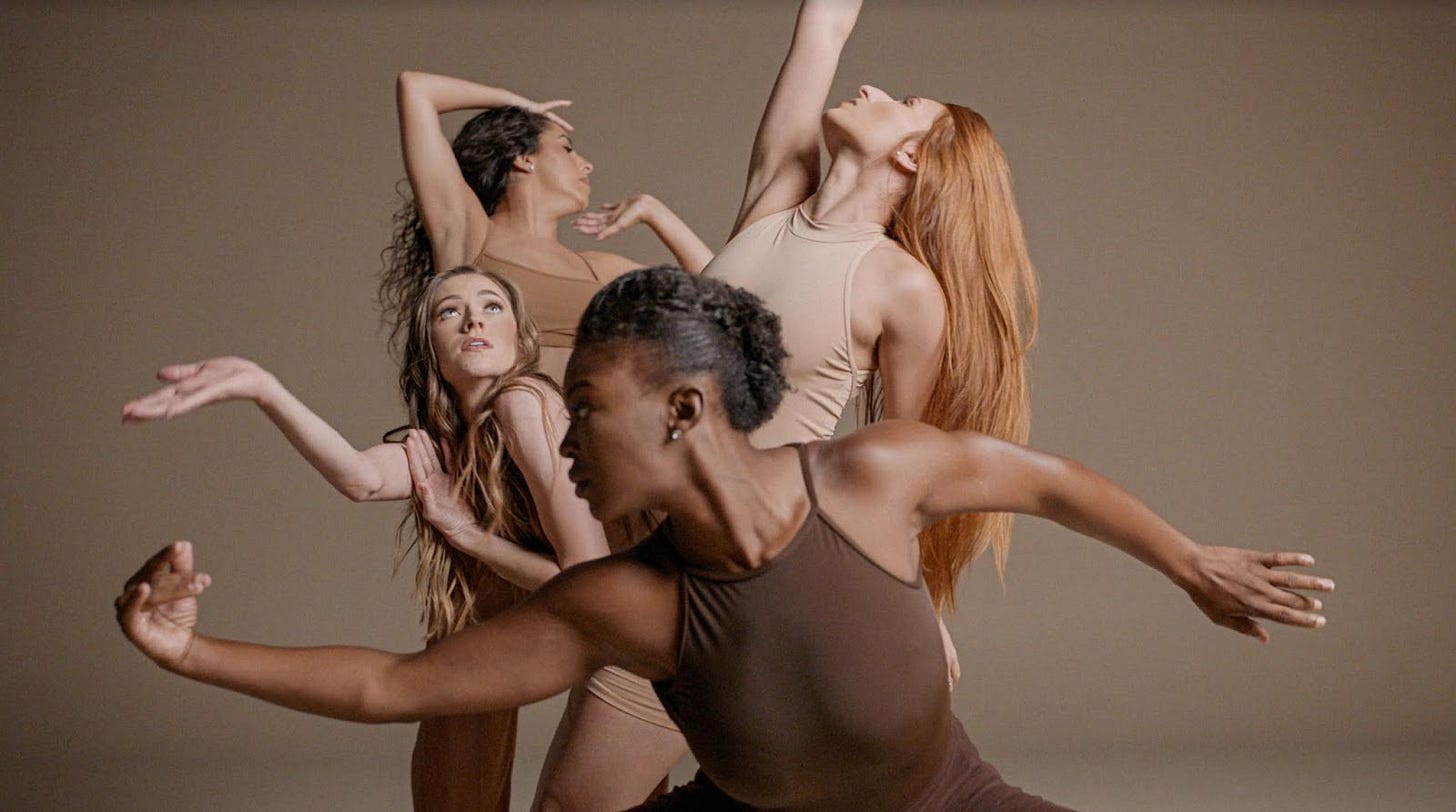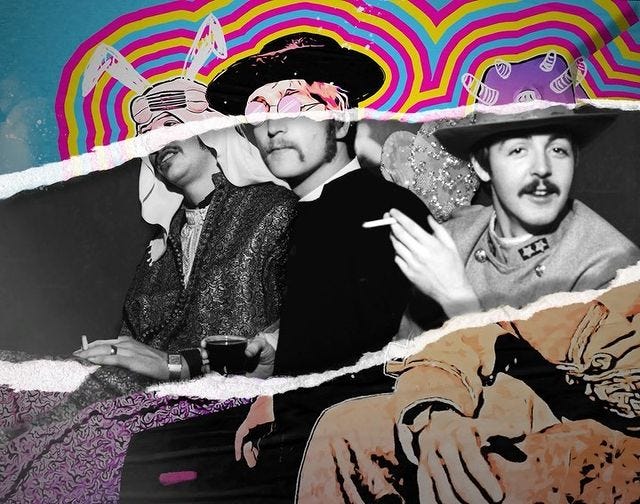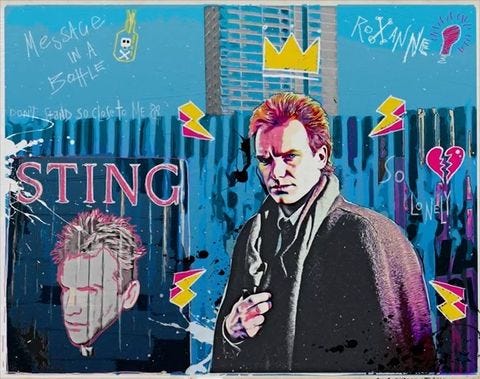Decentralized Rebellion | Decentralized Arts
BanklessDAO Weekly NFT and Cryptoart Newsletter
Dear Bankless Nation,🏴
One of the elements that we can learn from artists is that your mood has an important influence in your creations. In this issue of Decentralized Arts we learn how Bruce the Goose transformed his feelings from a difficult event into making a beautiful digital design.
Then we look at Rebel in Venus, a cabaret/ballet show where they encourage women to explore their traumatic experiences in life and influence them to heal and empower themselves. At the same time, they are navigating how the blockchain can improve the experience for the company and their followers.
We also take inspiration from Ethan Lim, a British teenager who has created an NFT project and will donate all profits from the sale to charity.
Finally, Valerio Esposito talks about the latest trends in photography in NFT form.
As you can see this is a packed issue and we hope that you enjoy reading our features and get motivated by so many talented creators.
Welcome to Decentralized Arts.
Contributors: BanklessDAO Writers Guild (Grendel, Kouros, Kaf, Brian Mark, Tam Gryn, Valerio Esposito, Frank America)
This is the official newsletter of BanklessDAO. To unsubscribe, edit your settings.
BanklessDAO Artist Showcase
🧑🎨 Artist: Bruce The Goose
🏦 Sale Type: Open edition
💰 Price: 0.01 ETH ****
1 Ξ NFT
🏦 Sale Type: Auction
💰 Reserve Price: 1 ETH
Ethereum is a Dark Forest
DA: When did you become a crypto artist?
BG: Around the end of 2019, I was researching bitcoin as a potential payment option for a drop shipping store I was working on because banks are dicks when you're a first-time business owner with no significant assets.
DA: Your account was hacked in 2020 and many assets were stolen from you. This event made you create the piece Ethereum is a Dark Forest. Can you tell us more about this terrible incident and why you decided to create this NFT?
BG: Yeah, I was relieved of all of my liquid assets; the most impactful of which was $AXS, which I'd put about $1500 into at $0.13 the day before it got listed on Binance's innovation zone. Luckily, no one gave a damn about NFTs at the time, and minus everything of significant value that I moved despite high gas fees, there's still about 700 NFTs in that wallet.
What happened: I downloaded a program called DAO Poker, which I saw advertised on etherscan and (wrongly) assumed that they vet their advertisers for legitimacy; which I realized was the culprit after dozens of hours of research and etherscan transaction forensics. Turns out, DAO Poker and several other programs which had millions in paid advertising, were trojans containing a malware, since dubbed ElectroRAT, which was designed from the ground up to be a backdoor into browser and hardware wallets. When it happened, obviously I was devastated (moreso because I've had no income or valuable assets outside of crypto since I first got involved), but a lot of people from the community reached out to try and help how they could, which reminded me that I wouldn't have had anything valuable to lose in the first place if not for the NFT space, and that my reason for being so passionate about it all was never money, it was art, the community, and being a part of something that would change the world. So instead of quitting, or becoming bitter, or trying to blame anyone for my own subpar security, I redirected that emotion and anger into something that, while morose, is also beautiful; which is how I've come to feel about the incident itself. That something is Ethereum is a Dark Forest. A grim reminder that for every life-changing story coming out of this space, there's twice as many bad actors. Predators lying wait in a dark forest.
DA: You are the founder of two NFT projects in the space. NFThub and Niftypride. What are these about?
BG: NFThub started in mid-2020, because even at that time, crypto twitter and discord seemed like a disorganized and ineffective way to keep up with everything happening in the space, so I figured it would make sense to try and build something to aggregate projects, events, and community interactions. Unfortunately, I'm not a dev, and refused to try raising any money with nothing to show for it first, and it's still heavily a work in progress. That summer, I bought a pride flag wearable for Cryptovoxels from a fellow artist in the space, pixls.eth, and they contacted me on discord to say thanks; leading to me having the spontaneous idea to try and put together a Pride Parade in Cryptovoxels due to the world being closed. A week later, though I'd struggle to explain how, Nifty Pride not only took place as the first metaverse pride parade, but was met with overwhelming support. The entire Bronx district in CV was decorated in rainbows, we streamed the event into the $WHALE discord, and dozens of artists had their work displayed in a 4-parcel gallery made available to us by WizardX. After the event, which had live music DJ'ed by Vandal from DAO records, a live art auction and exhibition, and likely a couple hundred people in attendance; it seemed like it would be an injustice to everyone involved, and everyone who donated parts or all of the proceeds from their artworks sold, if we were to simply pack it up for a year. So the Nifty Pride Parade became the Nifty Pride Foundation; an initiative to support, encourage, and showcase LGBTQ+ creators in the NFT space, and to provide a safe space community for anyone who wanted to be a part of it. A couple of weeks later we acquired a cryptovoxels parcel of our own, and built the Nifty Pride Centre for the Arts, which showcases queer artists' work, and has been host to a couple of events.
Rebel in Venus
How Rebel in Venus is Embracing Social Tokens in the Dance World
Author: The Rally team (Brian Mark, Tam Gryn)
For the last seven years, Marissa Alma Nick has been running her eponymous dance company, Alma Dance Theater, in her hometown of Miami. In 2018, she also started putting on a live show called Rebel in Venus, a cabaret-ballet that follows nine women as they have a girl’s night in, “playing dress-up while talking about sex, boys, feminism, tampons, tequila, assault... and a whole lot more,” as the description on the website puts it. With a sex-positive message, the performance explores both trauma and abuse as well as empowerment and healing through sensuality.
A little over a year after Rebel in Venus started, the pandemic hit. Live shows were postponed, touring was out of the question, and a community predicated on in-person interaction and physical space was temporarily upended. But Marissa also saw an opportunity to expand the community virtually, and she quickly went to work making the project pandemic-safe. She began holding private pole dancing lessons, writing a book, and live-streaming rehearsals and performances. Holders of her Coin, $REBEL, can now access those in real-time and in the Rebel in Venus archive, which continues to grow. And now that the live shows are on again, Coin holders get VIP access to the in-person performances.
We talked to Marissa about the multiple facets of Rebel in Venus, how she’s been expanding her community beyond Miami, and where social tokens fit into the dance world.
Could you describe Rebel in Venus for those who don’t know about it?
Rebel in Venus started in 2018 as a live show, which is primarily what I’d been doing pre-pandemic. Inspired by my own experience unraveling my abuse trauma, the show is about women exploring our own experiences and navigating that space. It’s also about how to redefine, for a new generation and in today's world, what it means to be that Venus goddess — what it means to own your body, to heal yourself, and to feel empowered.
Then COVID happened and there were no more shows for a while. Rebel in Venus started to pivot towards private pole classes geared specifically towards fem-identified persons who are, like myself, unraveling trauma. We use the pole and this sort of hypersexualized approach to reclaiming your body — and not just the body, but your own sensual power — in a really safe, private space.
Through that experience, I also decided to write a book. So suffice to say, Rebel in Venus started as one thing and has now become a bunch of different things. But the overall arc of the project is that it's meant to inspire healing. The biggest lesson I want people to take away is how to stop shaming yourself and instead honor yourself and where you are in that healing journey. And I try to convey that mostly through live shows, private classes and workshops, and now this book.
The other thread that runs through all of Rebel in Venus is the presence of the strip club or the pole, because for me, my journey in healing has been through navigating the strip club.
Can you tell me a bit about the book?
The book, also called Rebel In Venus, tells the story of the journey of a woman named Layla. She has difficulty functioning in this world, mostly by way of disassociation, avoidance, and her issues around sex. And she's trying to unravel where in her sexual life she might have been assaulted, or where there have been gray areas. Layla’s story is told through a conversation between her and her best friend, while smoking a joint and just hanging out.
During the pandemic, I had a lot of time sitting at home — I had also just had a meniscus repair surgery and my best friend had committed suicide. A lot was coming up for me, and I needed to do something with it. The book reflects a big part of my journey, what happened with my best friend, and how I have been lucky enough to have the financial support from family/friends to be able to get the therapy that I needed. One pivotal point that I want to get across in the story is that therapy shouldn’t be exclusive to people who can afford it. Because access to the right therapy, in my experience, can be one of the things that helps to save a life.
How have you been building a community through Rebel in Venus, and all of these different aspects of the project?
I have a dance company called Alma Dance Theater, which is what I've been doing for the last seven years, so I have this built-in community in Miami from that. A lot of people started coming to the Rebel in Venus shows because they were fans of the company. But before the pandemic, my community was very local to Miami.
During the pandemic, there was this void because of how much of my life was based on human-to-human interaction. I had an awakening that there was also this whole other world that I hadn't been accessing. There were other ways to communicate with people and share Rebel in Venus’s message. Rally has really given me the opportunity to expand the community.
I've never done anything like this before. I’m not an influencer, I’m a pretty private person. So it's been an interesting transition to find where I'm comfortable, and where my dancers or clients are comfortable, sharing our journeys with an online community. What I like about creating the $REBEL Coin is that it really does focus on the community, but it doesn’t have to be local. I love that even if you live in Australia, you can now access what's happening in Miami with Rebel in Venus.
What are some of the things you and your community have been doing with the $REBEL Coin?
Let's see. One of the first things I did was give Coin holders VIP access to the shows. We’re trying out a pre-show for the first time this month, where the VIP experience starts an hour and a half before the show. There's going to be a complimentary bar, a private tour of the whole stage set, and a meet and greet with the performers. There will also be a surprise pre-performance by one of the performers, and I’ll read an excerpt from the book. For each show, we want to create an equally unique VIP experience.
Another benefit for Coin holders is that they can stream our rehearsals. They receive a calendar of open rehearsals that we stream to Discord. Coin holders also have access to our archive of shows. Once the book is out, Coin holders will get a special poem and extra drawings from Amliv Sotomayor, who did the illustrations for the book. At first, I didn’t see how Rally was going to work for me — I don't normally stream, I wasn’t really into crypto — but it's beautiful because it's slowly starting to click.
It's interesting that you say that you're new to this world, because I noticed that you have such a thorough, accessible breakdown of the $REBEL Coin on the Rebel in Venus website. Have you found that your community is already engaged with, or knowledgeable about, social tokens, or has it been something you’ve had to introduce people to?
To be honest, nobody had any idea what I was talking about at first. It doesn’t bother me because it's new to me, too. I'm in my 30s, and I’ve found that people who are my age are like, "I get it, but it's so much. I'll let people figure it out for me." But I think everybody needs to understand this — it’s the future, it’s where we're going. So let's all take the time.
Then there's a whole younger population, the 18 to 22 year-olds — I used to teach at a college — and they're like, "No problem." They understand immediately what the incentive is, what to do with it. It's at such a low price right now, and they're like, "Oh, I get it. I'm going to buy it now.”
So in my experience, it's very demographic dependent. But overall, it's so new for everybody and I’ve just had to take the time to post about it on social media and just keep explaining it to get people curious enough to ask about it. And then take the time to explain it again.
Have you seen other examples of people engaging with social tokens in the dance world at large? Are there other companies, or the bigger institutions, that are doing something similar?
It's definitely not in the main sphere of conversation in the dance world. Concert-dance can sometimes stay very attached to the past. But thinking of it as this classical thing that we need to “honor” puts it at risk of no longer being relevant. I haven't seen the more established companies going for it, which is wild, because they have the infrastructure. I've only heard of one other independent choreographer, a friend of mine down here in Miami, who is fully into it. His approach is the same as mine: we have these younger dance companies, and we’re trying to look to the future with them. We’re asking, “How are we expanding our audience?”
I’m interested in how this has the potential to sustain us as a company. I want to be less dependable on donors and grants, and feel more of a sense of autonomy. I gave each of my dancers some of the $REBEL Coin, too, because I'm curious to see if it can also be a way to also pay the dancers.
Last question for you: Are there any new projects on the horizon that you're excited about?
Definitely the book and our show schedule. I’ll knock on wood because of the cancellations last year, but we're going for it. We have a new performance calendar. We’re not touring yet, but we do have a full season of shows coming up in Miami. And then for people outside of Miami, we’re working on expanding the live streaming. We’ll hold a streaming rehearsal twice a week from now until the fall, which means our show archive increases, our rehearsal archive also increases. We're just excited to be back in the studio and performing again, it's been a while.
Ethan Lim
Youth, talent and generosity
Author: Kaf
If we can take anything positive from the pandemic and the fact of being locked up at home, it is that the use of blockchain has accelerated. It was during that year when Bitcoin and Ethereum exploded and many of us (myself included) began to get seriously informed about this technology.
It was then when, in London, Ethan Lim, a young man of only 15 years old, began to study how to launch his collection of NFTs. He thoroughly researched the subject and after hours of learning with online tutorials and youtube videos, he successfully built an NFT and a website from scratch.
What stands out to me about this young man is his altruistic spirit. He could have done like most and released a collection with an ornate roadmap and made huge amounts of money. But he has decided to donate all the proceeds from the sale. In his own words "I realize that there are people less fortunate than me and I want to give back to the world after recognizing how much opportunity it has given me."
NFT Triangles collection
TriAngels is a 3D generative art project. It is a charity project in which 100% of the profits will be donated.
TriAngels are unique NFTs, and you will be able to own a rare digital interactive token, with the collectability of each TriAngel according to its rarity. You can have a limited edition piece of a maximum of 1000 TriAngels, while contributing to a charity that can make you feel good. As soon as Minting is available, you can adopt (purchase) TriAngels with a MetaMask wallet using the Mint tab in the navigation bar.
TriAngels will mint on March 19th. The first 10 Founder TriAngels will be minted for display at OpenSea to generate interest from the wider community about this project. After this, the next 90 TriAngels will be minted as TriAngels First Gen Edition. Later editions of TriAngels will be minted up to 1000 3D-TriAngels. There will be 4 more generations of TriAngels.
The most important thing about a charity project is where the money is going to be donated to and Ethan has chosen well. He has selected the Arrhythmia Alliance and the Fundacion Renacer. The first is a coalition of charities that promotes the study and treatment of arrhythmia. The second is an organization that helps Colombians to get out of poverty, the money will go to the construction of a nursery in Armenia, Colombia.
An Interview 3D TriAngels Creator, Ethan Lim
We wanted to contact Ethan to ask him some questions to which he has gladly agreed.
DA: Hi Ethan. Could you tell us a bit about yourself in a few words or facts?
E*:* I’m Ethan, a 15 yo pupil based in the UK. I always loved maths & logic, code, and 3D modeling so when a chance to incorporate all 3 skills came with NFTs I was delighted to learn about them and create my own project.
DA: You are very young, what are you studying?
E: I’m in my first year of the GCSE course, with my favorite subjects being maths and science! I love the logical thinking involved.
DA: Where does your love for math and coding come from?
E: It started when I was young with scratch.mit.edu. This is a website for basic visual scripting but, using my logical thinking, maths skills, and imagination, there were endless possibilities and the ability to create anything imaginable is what sparked my interest.
DA: How did you come up with the idea of NFT TriAngels?
E: I was introduced to the NFT space during the summer holidays, where I had a lot of free time. I decided to learn how to create NFTs and because I love 3D modeling, I took it up on myself to make 3D art. I loved the learning experience, and the skills I learnt, including even public speaking in presenting my project. I am so grateful to have had this opportunity and I would like to give back to the world for giving me this chance, so I created an angelic figure (like a guardian angel) and decided to give 100% of the mint to charity!
DA: What do you think of the criticism of NFTs?
I believe that there is great fear of the unknown in society. When the internet first came out, people were also skeptical but education of how it works and the utility of it has led to it becoming an essential part of everyday life. I believe this will happen with NFTs as well and, as people become more comfortable with this new technology, NFTs will become more accepted and eventually (hopefully) become the norm!
DA: Thank you very much Ethan. You are an example for young people and your desire to learn and share is admirable.
Good luck with the project!
🌐 Curated NFT News
Yuga Labs Buys the CryptoPunks and Meebits Collections
Yuga Labs, the creator of Bored Apes Yacht Club, announced on Friday that they have acquired the Cryptopunks and Meebits IPs from Larva Labs. The terms of the deal have not been disclosed.
In the statement, Yuga Labs said: "We now own the brands, copyright in the art, and other IP rights for both collections, along with 423 CryptoPunks and 1711 Meebits".
The company, however, wants to grant full commercial rights of the Cryptopunks and Meebits to the individual owners of the NFTs. Something that they do with the Bored Apes already.
Apart from this, Yuga Labs doesn't have any other immediate plans for the project and wants to listen to the community before taking any further decisions. Larva Labs, meanwhile, will continue to work on other projects.
Reimagining the Future of Photography in NFT form
Author: Artynft.io - Valerio Esposito
Distorted landscapes, heavily manipulated realities, visual nightmares of a multi-dimensional nature and psychedelic episodes induced by cocktails of digital alterations. NFT photography means different things to different people, but it remains something blockchain enthusiasts and visual creators have paid limited attention to, its inclusion in the crypto-sphere is often seen as predictable and instrumental at best.
While some photographers have been making strides (and money) selling their work in NFT form, this appears limited to benefits of a transactional nature which, while extremely important to creators, fail to take into account the aesthetic implications and possibilities of it.
A limited but loud number of crypto-artists are proving that photography can - and should - be translated to fit into an almost exclusively digital dimension of creation and consumption, where bi-dimensional, old-fashioned views of visual storytelling are symptomatic of narrow-minded attitudes towards the medium, resulted in an array of missed opportunities for artists and collectors alike.
A new wave of creators are pioneering new artistic genres that elevate photography, turning it into the foundation of more intricate, mixed media and cross-platform works of art which may (or may not) signify the beginning of a new movement.
The contract between artist and consumer has fundamentally changed. More positive attitudes towards digital manipulation mean that the emphasis placed on realism is progressively diminishing, moving from unconditional loyalty to reality to the celebration of contamination, embracing aesthetics that are proudly artificial.
Artists like Elise Swopes, a native to the digital sphere, are extremely savvy in navigating these dimensions, deliberately testing their flexibility and expanding their scope. The US-based photographer describes herself as a visual storyteller: she uses expansive cityscapes as a starting point, taken while piloting drones, climbing skyscrapers or hanging out of helicopters. She then distorts her images, dipping them in urban surrealism, not shying away from contradictions but deliberately bringing them to the surface - exaggerating man-made landscape features while blending them with familiarity of natural elements that appear exotic by contrast.
EXAMPLES ELISE SWOPES:
“I use photography in my work by first taking the photos with my iPhone. And then I mask, I layer, I include different elements and different surrealistic styles,” Elise explains. “I like to play with perspective, I like to play with empty space more than anything, because if I see negative space, I want to fill it with something that's not supposed to be there.”
The divorce from realism is the most powerful tool an artist can have when making the transition into crypto-art. Elise sold her first NFT in February 2021 - and since then she has made a name for herself, building a recognisable brand which she has earned the respect of collectors and fellow creators: “I don't think we have to pressure anybody to do anything that they don't want to do,” she explains. “If you want to establish a utility and have ownership and be able to have access to the data that you provide for others and what others get from you, then NFTs are for you.”
What the most conservative voices of visual arts may have failed to consider is the unexpected ways in which this established art form may find fertile ground to flourish in the crypto-world, in new (or renewed) forms. This is the spirit behind the creative mission of the Ken Griffiths Bureau - a London-based organisation that brings together artists from all over the world to turn iconic analogue photographs into NFTs.
Ruby Griffiths, founder and director of the Bureau and daughter of the late legendary photographer Ken Griffiths, recently obtained ownership of her late father’s archive and set upon a journey to build on his legacy, by collecting his work and revisiting it through the creative lens of contemporary artists who draw inspiration from it.
One of them is Remo Camerota, who joined forces with the Bureau to generate striking NFT revisitations of legendary analogue photographs of ten of the greatest music legends of all time. The original pictures, shot by renowned photographers Ken Griffiths and Bruce Fleming, portray some of the most recognisable faces of the past century. They are given new life in Remo’s NFT artworks and a new place in contemporary pop culture. “We coupled these photographs with my eccentric, colourful pop deconstruction style, adding hand-drawn elements and stop frame animation to create a flow of the celebrities’ mood and personality before I reveal the final iconic photograph,” Remo explains.
REMO EXAMPLES:
This, they argue, can benefit old and new generations of artists alike. When Remo’s NFT revisitation of Fleming’s infamous Beatles shot sold for 2.5 ETH, this reignited Fleming back into his career, showing that NFTs can be instrumental in allowing historical works of art to find a place in the modern world that is more contemporary than nostalgic.
Ruby’s mission in the NFT world culminated recently in the “HRH Princess Margaret – 20 Years 20 Artworks’ exhibition”, in which 22 contemporary artists created 20 incredible artworks - some physical, some in NFT form - inspired by Ken Griffiths’s iconic portrait of Princess Margaret. This included big names, such as Amrit Pal Singh and Remo himself.
KGB EXAMPLES:
The possibilities of NFT appeal to established and emerging artists alike. An example of the latter is UK-based crypto-artist Matty Furious, whose interest in early 1.0 internet, British urban upbringing and cynicism have fed into his current NFT work.
“I like twisting things to be more different or more exaggerated and see where the conversation leads. I enjoy doing this with my art as well, from everything that’s digital, like JPEGs to GIF videos, to interactive pieces of software,” Matty explains.
MATTY FURIOUS EXAMPLES:
By seeing himself as an outcast in the art world, he claimed the NFT as its own, describing it as a dimension in which he is able to tell stories and produce high quality artwork outside of the traditional systems, and without the need for validation from critics or institutions.
Photography is an essential building block in the composition of his work: “I use photogrammetry in 3-D scanning techniques to incorporate real-world elements into artworks. This gives me the ability to get inspiration from something and bring it directly into the 3-D world and manipulate it in any way I want.”
The examples above tease exciting and unpredictable trajectories for the future of photography and crypto-art, a movement that is still malleable due to its newness, and expandable due to its lack of pre-established standards that often limit the creative scope of creators in the traditional art world. This could go both ways - some people are waiting for it to be exposed as a fad, a scam, while others are pinning all their hopes on it for artistic recognition and monetary glory.
No one knows which way this is going to go, but some may say that’s the beauty of it - a limitless expansion in multiple directions which can lead to surprising, multi-sensorial experiences and new ideas of ownership for a product that has never existed in its current form, and therefore could never be owned.
Last week’s weekly showcase numbers
Artist Perchy made a total of 3.927 ETH in sales with The Charts NFT.
Call to Action
🎨 Participate in the NFT-Club channel: Share your passion for NFTs, your favorite collections, your favorite crypto artists!
❤️ Follow Decentralized Arts on Twitter.
✍️ Write an article for Decentralized Arts, contact Grendel, Kouros or Frank!




















